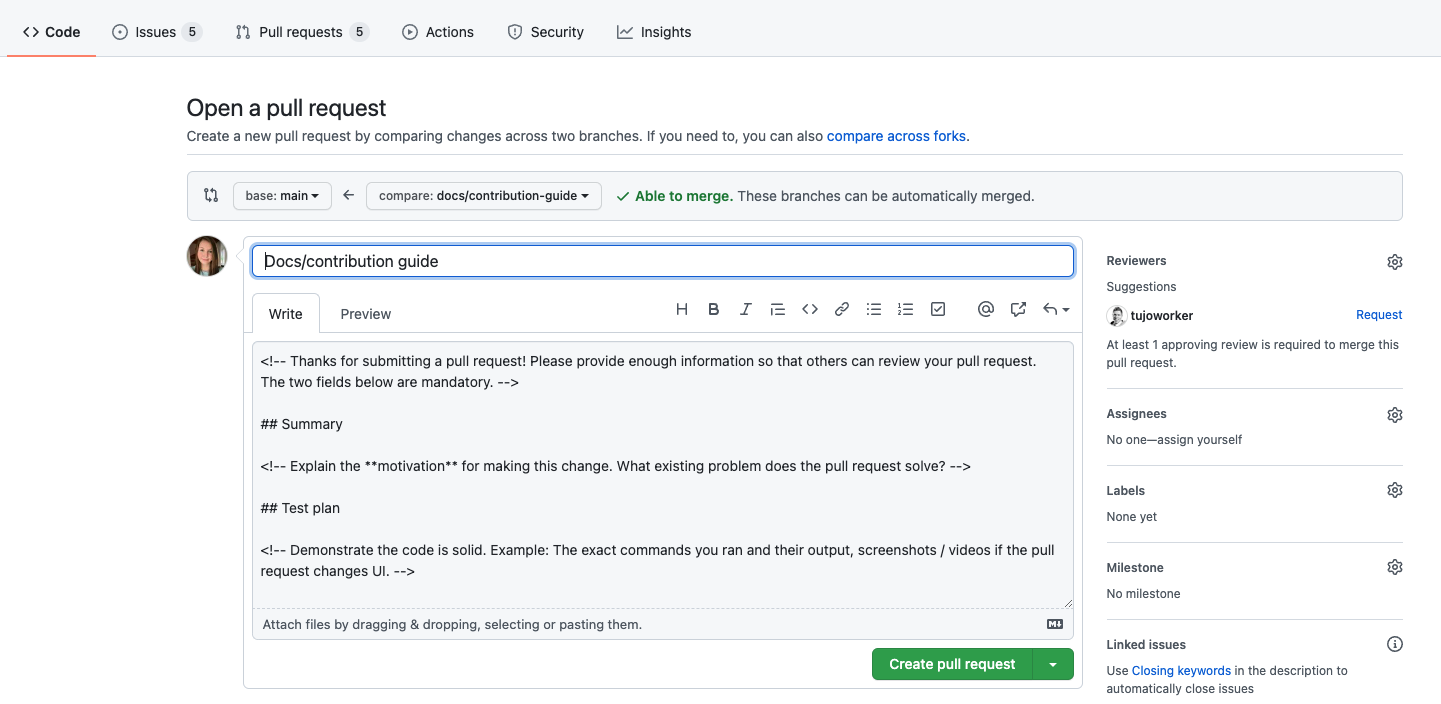Git convention
Make sure you follow Semantic Versioning
Version numbers are handled automatically by using semantic-release.
Commit Messages
For consistency, please write commit messages in the imperative mood.
A clear and concise commit message helps others understand the purpose of the commit and makes it easier to search through the history for specific changes.
Why the Imperative Mood?
The imperative mood matches the implied "command" to the codebase. Think of the message as completing the phrase: "This commit will...". For example:
- "Fix bug" (instead of "Fixed bug")
- "Add feature" (instead of "Added feature")
- "Refactor code" (instead of "Refactored code")
This convention helps maintain consistency and clarity across the Eufemia codebase.
Decorate your commit messages
Make sure to decorate your commit messages with either Conventional Commits or simple-commit-message:
fix: fix messageas the subjectfeat: feature messageas the subject- For a major change:
feat: message+BREAKING CHANGE:in the footer of the commit. See example below.
If you are working on a single component update, you can use a decoration and a scope in parenthesis:
fix(ExampleComponent): an example fix messagefeat(ExampleComponent): this is a new feature
You can also use the following decorators – but keep in mind, they won't be included in the releases change log:
chore:docs:style:build:ci:refactor:perf:test:
Example of a breaking change commit message:
feat: commit subject with optional decoratorBody with textSeveral linesBREAKING CHANGE:Subject (will be a list item):Markdown text over several lines.Additional text such as:1. List item2. List item
You can find more info in the docs of semantic-release and Conventional Commits.
Ignore CI run
You can either include [skip ci] in your commit message or let your branch name end with --skip-ci.
Rebasing
Squash commits
If you have to make a small fix after you committed:
- Make and commit the new change
- Squash and rebase with the previous commit
- Force push to your branch
Rebase onto main
If you are working on a branch for a long period, it might be necessary to do a rebase on main once in a while:
git fetch origin && git rebase origin/main
Pull Requests
When you have committed changes to your branch, go to Github Pull Requests and open a New pull request.

You will most likely get the yellow notification bar mentioning that a branch had a recent push. Click on the Compare and pull request button. This will take you to the page for opening a pull request. Fill out the template under the Write tab.

Request a reviewer, create the pull request and watch the results of the pipeline checks.